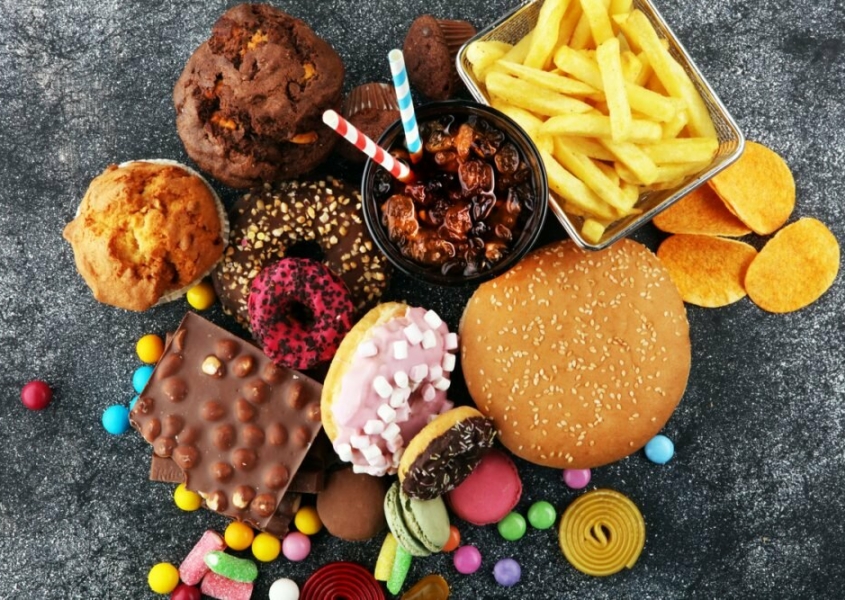The DASH diet (Dietary Approach to Stopping Hypertension) has been consistently rated the #1 diet by US News & World Report for the last 6 years. Different than the fad diets that promise dramatic weight loss, the DASH diet is based on sound nutrition principles that everyone should follow. At Chefs For Seniors, we use the DASH diet principles to come up with a lot of our weekly menu items!
The DASH diet plan was developed to help people lower their blood pressure without medication. Initial research showed that the DASH diet could effectively lower blood pressure, even with a sodium intake of 3300mg/day (for reference, most people should consume less than 2300mg/day). Since then, other studies have shown the DASH diet to also be effective at reducing risk of diabetes, stroke, certain kinds of cancer, and kidney stones. Many people have also used the DASH diet as a safe and effective way to lose weight.
The DASH Diet food pyramid.
DASH Diet Eating Plan
The DASH diet includes lots of whole grains, vegetables, fruits, and low-fat dairy products. For protein, you’re encouraged to eat fish, lean meats, legumes, and nuts/seeds.
One of the nice aspects of the DASH diet is you can eat some unhealthy foods, as long as its in moderation. These foods include red meat, saturated fats, and desserts.
Here’s a look at the recommended number of servings from each food group for someone following a 2000 calorie-per-day DASH diet plan:
Grains
7-8 servings per day. You’ll want to have at least 3, ideally all, of your grain servings to be whole grains.
Example of whole grains include:
- Brown rice
- Whole wheat pasta
- Whole wheat bread
- Oatmeal
Whole grains, which are considered complex carbs, are better for you than simple carbs (think white bread) because they have more fiber and nutrients.
Vegetables
4-5 servings per day. Vegetables are without a doubt the most vitamin and mineral-packed foods you can find. Fresh and frozen vegetables are usually the best choices, but if you buy canned vegetables look for lower sodium products. One trick to upping your vegetable intake is to fill up ~1/2 your plate with vegetables for each meal.
Almost all vegetables are DASH-friendly, some examples include:
- Carrots
- Broccoli
- Greens
- Green beans
- Brussel sprouts
- Celery
Fruits
4-5 servings per day. Fruit is great because it can be eaten with almost every meal, it tastes great, and can even be a healthy alternative for dessert. Plus, most fruit is packed with fiber and other important nutrients like vitamin C.
If you drink fruit juice, make sure to buy the kind without added sugar. You’ll also want to leave edible peels on fruits like apples, pears, and peaches.
Finally, you’ll want to consult with your doctor to see if there are certain fruits you should avoid. For example, grapefruit interacts with some medications.
Dairy
2-3 servings per day. Dairy products are the best sources of calcium, an important nutrient for everyone. The key is to choose dairy products low in saturated fats – which means cutting back on foods like heavy cream, certain cheeses, and ice cream.
If you are lactose-intolerant, choose lactose-free dairy products or you can take lactase supplements.
Some examples of healthy dairy products include:
- Greek yogurt
- Milk (skim, 1%, or 2%)
- Part-skim cheese
Meat, Fish, & Poultry
2 or fewer servings per day. Compared to other diets, the DASH Diet doesn’t call for a lot of meat. The reality is that most people in the US get plenty of protein, and eating too much meat high in saturated fats can lead to various health problems like heart disease.
That said, eating leans meats in moderation is beneficial because they’re rich in B vitamins, iron, zinc, and of course protein. Fish is also high in omega-3 fatty acids, which can help lower your bad cholesterol.
Some examples of DASH-friendly meat, fish, and poultry include:
- Salmon
- Canned tuna
- Chicken
- Pork tenderloin
Oils & Other Fats
2-3 servings of healthy fats per day. Focus on healthy fats, like:
- Coconut oil
- Olive oil
- Avocado
- Salmon
- Nuts
Eating the right amount of good fats helps you absorb fat-soluble nutrients, but eating too much can cause you to gain weight. For the DASH diet, try to limit fats to < 30% of daily calorie intake.
Avoid trans and saturated fats, which can lead to heart disease. Examples of these fats include butter, red meat, and cream.
Nuts, Seeds, & Legumes
4-5 servings per week. These foods are a great source of fiber, protein, and other key nutrients. While nuts are high in fat, they’re high in goods fats so eating them in moderation is good for you.
DASH Diet Sodium Guidelines
The standard DASH diet calls for less than 2300mg of sodium per day. There’s also a low sodium DASH diet plan that calls for less than 1500mg of sodium daily. To put those numbers in perspective, the average person in the US consumes ~3500mg of sodium per day.
To help you cut back on sodium intake:
- Eat whole foods instead of processed foods
- Take the salt-shaker off the table
- Rinse canned vegetables and beans
- Read labels and carefully examine sodium content
Starting The DASH Diet
Here are some helpful tips if you’re going to start following the DASH Diet:
- Add exercise into your routine: this will help reduce your blood pressure even further.
- Buy a recipes book: dashdiet.org/dash_diet_book.asp
- Ask your doctor for advice: you may want to also set up an appointment with a dietitian through your healthcare system.
- Hire a chef: if you have the means, hiring a personal chef service like Chefs For Seniors can help you ensure that you’re following the DASH Diet plan. Plus, it’ll save you a lot of time cooking, menu planning, and grocery shopping!













